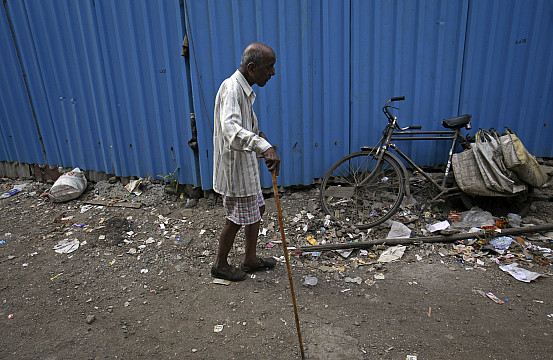India’s ageing population
May 17, 2017 | Expert Insights

According to PFRDA-CRISIL report titled, ‘Financial security for India’s elderly – The imperatives’, India will begin ageing gradually and will transform from ‘young’ to a ‘greying’. By 2050 every 5th Indian would be a sexagenarian contrast to every 12th person at present, putting the nation in a place similar to the developed economies in terms of share of elderly people in the total population.
‘Financial security for India’s elderly – The imperatives’
The report stated that, by 2050, people above the age of 60 will increase from the existing 8.9% of the population to 19.4 %. Also, the population of people above 80 is likely to increase from 0.9% to 2.8%. As of 2015, almost 90% of the population are below the age of 60 years and the proportion of working age population stood at 44%. It is also said that constantly deteriorating inter-generational support within families demands the development of well-built, pension system in the country. In addition, government should focus on voluntary pension; improve the asset allocation for the organized pension sector and financial awareness of pension products in the country.
Policies for the Elderly in India
A Number of National policies for Elderly run in India. Article 41 states that State shall, within the limits of its economic capacity and development, make effective provision for securing the right of public assistance in cases of old age. The Maintenance and Welfare of Parents and Senior Citizen Act, was enacted in December 2007 to ensure need-based, maintenance of parents and senior citizens and their welfare. To ensure the longer, secure, dignified and productive life for elderly people, an Integrated Program for Older Person (IPOP) was implemented in 1992 with the aim to improve the quality of life of senior citizen by providing basic amenities such as shelter, food and medical care.
Analysis
India has extensive provisions for the elderly; however, the growing number of crime rates and occurrences of physical abuse highlight that there is a clear lack of implementation and awareness among elderly people about the existing policies. In India senior citizen depend on their families to fulfill their needs. In contrast, other countries with ageing populations have policies to make older adults self-sufficient and independent. For instance, Japan implemented a social long-term care insurance (LTCI) system in 2000, where institutional and community-based services such as home-help and rehabilitation services was available to each individual, aged 65 years or above and is certified to have physical or mental health needs irrespective of income levels and family support. Similarly, China is moving towards long-term care goals by establishing alternative care giving arrangements.
Assessment
Ageing population is gradually becoming a major concern for both developed and developing nations. Increasing number of older adults is a distress that needs to be prioritized. Data from the NCRB report has shown a sharp increase in the number of crimes against senior citizens by 10% in 2015 compared to the previous year. Vulnerability and lack of protection have been a major cause for the same.
Compared to other countries, Indian senior citizens fail to avail the benefits of existing policies. Data shows that despite various pension schemes, only 20 percent of the elderly population is covered. Government needs to focus its policies towards medical facilities and shelter considering the difference in social norms prevalent in villages, small towns and metropolitan areas.
Ageing population would increase the dependency ratio, which is taken as the numbers of working age people for every older person. This in turn will show a clear bulge in taxation and increased public spending on health care and pension for old age. Higher savings for pension funds would lead to a reduction in the productive investment gradually affecting economic growth.








Comments